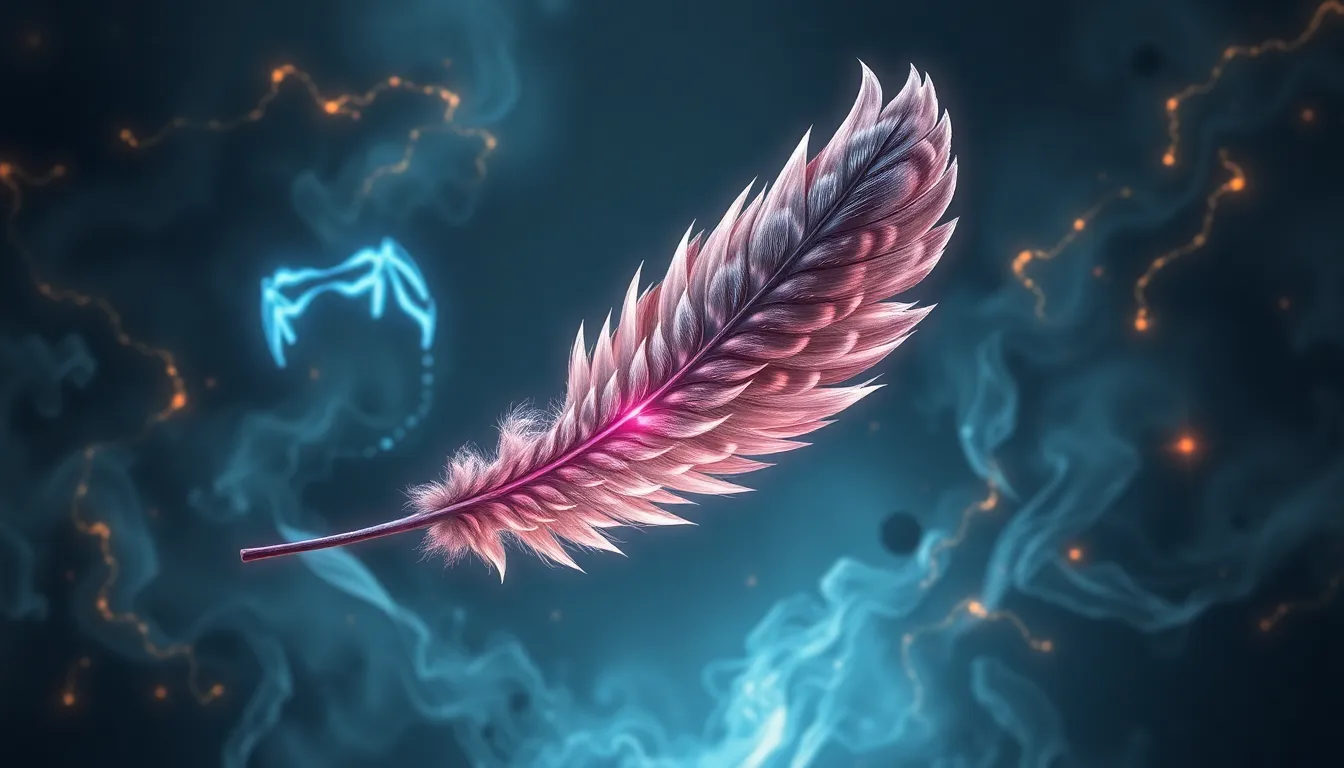The Simurgh’s Feather: A Symbol of Power and Protection
I. Introduction
The Simurgh, a mythical creature in Persian mythology, embodies many virtues and serves as a symbol of power and protection. Often depicted as a majestic bird resembling a peacock or a griffin, the Simurgh has captured the imaginations of many through centuries of rich storytelling. Its feather, in particular, holds profound significance, representing divine protection and wisdom.
This article aims to explore the origins of the Simurgh, the symbolism of its feather, its role in folklore, and its relevance in modern culture. By delving into these aspects, we can understand the enduring legacy of the Simurgh’s feather and its cultural significance across various societies.
II. The Origins of the Simurgh
The origins of the Simurgh can be traced back to ancient Persian culture, where it is often associated with the divine, the cosmos, and the natural world. The Simurgh is frequently mentioned in Persian literature, such as the “Shahnameh” (Book of Kings) by Ferdowsi, where it is portrayed as a benevolent creature that aids heroes in their quests.
In early Persian texts, the Simurgh was depicted as a creature of immense wisdom and strength, often residing on the mythical Mount Qaf. Over time, its symbolism evolved, embodying notions of nurturing, healing, and protection. The Simurgh’s feathers, especially, became symbols of hope and inspiration for those in need.
III. The Symbolism of the Feather
The feather of the Simurgh is rich in symbolism and has been interpreted in various ways across different cultures:
- Divine Protection: The feather is often seen as a talisman of protection, believed to ward off evil and bring safety to its bearer.
- Power and Authority: In many cultures, feathers signify power, and the Simurgh’s feather is no exception; it represents strength and leadership.
- Wisdom and Enlightenment: The feather is associated with knowledge, symbolizing the pursuit of enlightenment and understanding.
These interpretations highlight the feather’s multifaceted nature, making it a compelling symbol across various belief systems.
IV. The Role of the Simurgh in Folklore
The Simurgh features prominently in numerous stories and legends, often serving as a guide or protector to heroes. One of the most notable tales is that of the hero Zal, whose life was saved by the Simurgh’s intervention. The Simurgh provided Zal with feathers, which he could use to summon her help in times of need.
In these narratives, the feather serves various roles:
- Instrument of Rescue: The feather symbolizes the means through which characters can invoke the Simurgh’s aid.
- Token of Wisdom: It often represents the wisdom gained through experience and the lessons learned along the journey.
- Connection to the Divine: The feather signifies a link between the earthly realm and the divine, emphasizing the importance of seeking guidance from higher powers.
These tales convey important lessons about courage, loyalty, and the quest for knowledge, showcasing the Simurgh’s role as a mentor and protector.
V. The Simurgh’s Feather in Art and Literature
The imagery of the Simurgh and its feather has been a popular subject in Persian art, particularly in miniatures. Artists have captured the creature’s ethereal beauty, often portraying it in vibrant colors and intricate patterns. Contemporary artists continue to draw inspiration from the Simurgh, incorporating its symbolism into modern artworks.
In literature, the Simurgh has been referenced in various works, influencing writers and poets beyond Persian culture. Its feather serves as a recurring motif, symbolizing the struggles and triumphs of human experience. Notable adaptations include:
- Modern poetry that reflects on themes of empowerment and resilience.
- Literary works that explore the connection between humanity and the divine through the motif of the feather.
The ongoing relevance of the Simurgh’s feather in art and literature underscores its significance as a symbol of hope and inspiration.
VI. The Simurgh’s Feather in Modern Culture
In contemporary culture, the Simurgh’s feather has found its way into various realms, influencing modern symbolism and aesthetics. Its impact can be seen in:
- Fashion and Design: Designers often incorporate feather motifs into clothing and accessories, representing elegance and grace.
- Branding: The feather is used in logos and branding to convey messages of strength, freedom, and creativity.
- Social Movements: The feather has become a symbol of empowerment, representing the voices of those advocating for change and justice.
This transformation reflects the adaptability of the Simurgh’s feather as it resonates with contemporary values and aspirations.
VII. Interpretations and Misinterpretations
Despite its rich symbolism, there are common misconceptions regarding the Simurgh and its feather. Some may view the Simurgh merely as a mythical creature without recognizing its deeper meanings and cultural significance.
Clarifying these misconceptions involves:
- Understanding the historical and cultural contexts of the Simurgh.
- Recognizing the feather’s multifaceted interpretations across different societies.
- Addressing the impact of globalization, which can sometimes oversimplify or distort traditional meanings.
By fostering a deeper understanding, we can appreciate the true significance of the Simurgh and its feather in our collective heritage.
VIII. Conclusion
The Simurgh’s feather remains a powerful symbol of protection, wisdom, and empowerment. Its significance transcends time and culture, resonating with those who seek guidance and inspiration. As we reflect on the legacy of the Simurgh and its feather, we recognize its enduring relevance in our lives today.
In a world where the need for protection and wisdom is ever-present, the Simurgh’s feather serves as a reminder of our connection to the divine and the strength found in our cultural heritage. Embracing this legacy allows us to draw upon the power of the Simurgh as we navigate our own journeys.




